
Liz Anderson
Enter the wonderful world of wetlands in this episode of Naturally Speaking! Join host Liz on an exploration of the unique features of wetlands. Delve into the biodiversity of wetlands and marshes, then learn about peatlands and bog bodies in the brief Nature Nugget. This episode features a conversation with Dr. Jessica Pearson, a professor with SUNY Potsdam’s environmental studies department. She explains more about the benefits of wetlands, threats they are facing in the North Country, and her work to mitigate one of those threats - the invasive plant called purple loosestrife. Next time you’re looking to get outside, consider a trail that features a wetland!
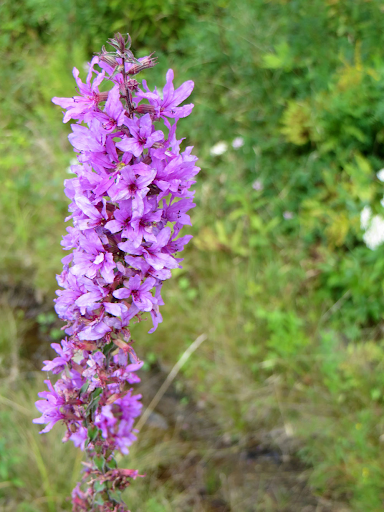
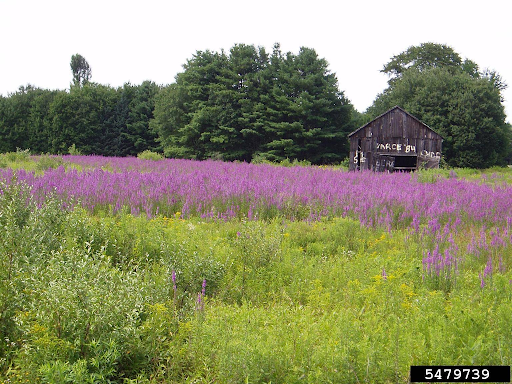
Find research about purple loosestrife in the North Country published by Dr. Jessica Pearson here: https://www.nature.com/articles/s41598-022-09194-w
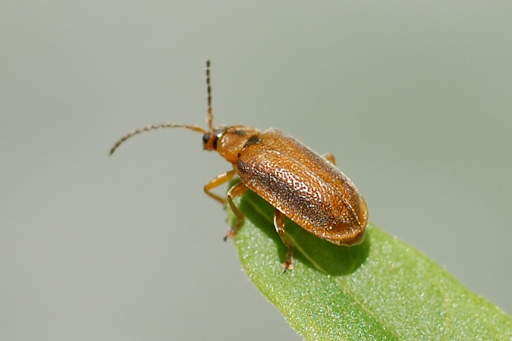
This is the beetle, Galerucella, that Dr. Pearson is introducing into areas with purple loosestrife. More information can be found here: https://usfwsnortheast.wordpress.com/tag/galerucella-beetle/
Jess also brings up the importance of being deliberate with what plants you introduce to your yard and area. One example she gives is blue flag irises and yellow flag irises. Click on the links under each image to learn more details about each plant. Blue flag irises are native to New York, and great to plant.
Blue Flag Iris - Native to NY
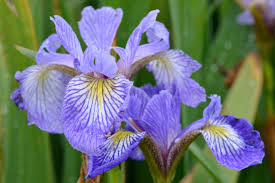
https://wildadirondacks.org/adirondack-wildflowers-blue-flag-iris-versicolor.html
Yellow Flag Iris - Invasive in NY
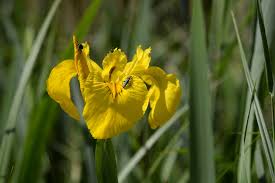
Hello, welcome to Natural Speaking podcast created by Nature Up North.
I'm Liz, and I'll be your host for this episode.
Today we’re going to be talking about one of my favorite ecosystems, wetlands.
Maybe you're like me and get excited whenever you see a boardwalk while you're out hiking. Personally, I love trails with a boardwalk because it usually means that trail goes through wetlands.
A notable trail with a wetland and a boardwalk in the North Country is the Indian Creek Nature Center located in Canton.
The trail has informational signs along the boardwalk that go over what plants, animals, birds that you'll see in that wetlands, making it a really great place to learn about wetlands, learn about the biodiversity of wetlands, and just see some really cool things.
Wetlands are defined as areas that are covered by shallow water for the whole year or just part of the year, or seasonally. The term wetlands can encompass habitats that are found in the North Country, such as marshes, peatlands and swamps.
Marshes are one of the more well known types of wetlands. They have the highest water amount, ranging from a couple inches to six feet, and they also have the highest productivity rate of any of the types of wetlands.
This means that the area is very nutrient rich due to cycling of water through the ecosystem, and with that comes the cycling of oxygen and oxygen is what allows for decomposition to happen faster, and the decomposition of organic matter in the ecosystem then just adds even more nutrients as it breaks down, releasing nitrogen, phosphorus, other nutrients that are really important for plant life, which then translates up to animal life and just overall you get a much wider range of species and trophic levels in these marsh nutrient rich ecosystems.
Now I'm going to interject briefly here for our nature. Nugget of the episode. If you don't know, a nature nugget is just a little audio clip where we talk about something a bit different but related to the topic of our podcast. So for this podcast, my Nature nugget is going to be about peatlands and the Tollund Man.
So transitioning away from marshes, which are very nutrient rich due to the oxygen cycling that we talked about previously, I'm going to talk about peatlands and bogs, which a bog is a type of peatlands and peatlands are wetlands that have a really low oxygen level, so there's not much nutrients cycling happening. There's not much water flow. It's all just very still and rich and dense.
So peatlands and bogs are the opposite of marshes in that they have a very low productivity rate. There's not much oxygen, and this means that things decompose very slowly.
And an example of this is bodies, even human bodies that have been found in peatlands, and they have been found in really good condition.
These bodies that are found in peatlands and bogs, a lot of the times they're called bog bodies. They're really great source of information for archaeologists for scientists because it provides that first hand evidence of life in the past life through history life prehistory. Just having that well preserved body gives direct data to the scientists studying them.
And one of the most famous bog bodies that they have found is the Tolland man. Tollund Man is 2300 year old body that was found in a Petland in 1950, and his body was extremely well preserved. His internal organs, his brain was still there. They performed an autopsy on him and were able to study his brain and his organs. They're still there. They hadn't decomposed, and they were even able to get good quality fingerprints off of the Tollund Man.
Other bog bodies have also been found to be extremely well preserved, to the point where scientists can examine a bog body's stomach and find what that person's last ate before they died, and they can see the clothing that they're wearing. The hair is still preserved on the body.
It's really, really cool, and this is all due to just the environment and the ecosystem that they were some so-called buried in when they died. They weren't buried underground where there's decomposers and microorganisms, worms, insects that naturally decompose things, fungi. They were in peatland, in a bog and that bog had the right conditions to preserve that organic matter.
In a way that carried forward for the tolling man 2300 years, to the point where now you can be on display somewhere and it's a recognizable human body. That concludes our nature nugget for this podcast, and now we're going to get back to talking about wetlands and marshes.
The reason I get so excited about hiking in marshes and on boardwalks and wetlands is all that incredible biodiversity that can be found there. One of my favorite things to do when I'm hiking, and there is an aquatic area, is to just count frogs that I might see and I found upwards of 20 frogs in one hike sometimes.
I also love to look for evidence of Beavers like seeing trees that have been chewed on the wood shavings underneath. Seeing if maybe there are a Beaver Dam around or a lodge. Beavers are really fascinating and if you want to learn more about Beavers and how they benefit an ecosystem and biodiversity, how they can be ecosystem engineers, go check out the blog called Beneficial Beavers on the Nature Up North website.
That blog talks about how Beavers create wetland habitats and how they boost biodiversity in that way, and just how important that is to ecosystems to the world.
Wetlands are also a great place to hike if you're into birding and you can see a very wide range of birds in a wetland from bigger birds like great blue herons, which are my favorite bird to see when I'm in a wetlands, smaller birds and all sizes in between.
Wetland habitats created by Beavers, diverting water into a previously dry area can have a lot of dead trees from that overwhelming new water. And in those trees you can often see woodpeckers eating the insects that then take over that tree.
Now that you have a general understanding of what wetlands are, I have doctor Jess Pearson from SUNY Potsdam's Environmental Studies department here to talk more with me about wetlands and her work with wetlands.
Hi, Jess. Thank you so much for taking the time to talk with me.
And we're gonna jump it in to discussing wetlands in the North Country and work that's been done with wetlands in the North Country. Specifically what you're doing with wetlands. Sounds great. So my first question to you is in, in general, why are wetlands such an important ecosystem in the North Country and what do they do for the North Country ecosystems around them?
So there are a couple of different ways that I like to look at this. So wetlands and marshes are incredible sources to help us clean the water. They keep everything from flooding too much. They act like a sponge and absorb that water, and then they filter all that water through it.
So we're really lucky in the North Country we have such a wide network of waterways and wetlands tend to connect a lot of those. So it keeps our water really clean ss we're going through and then the other thing that wetlands and anything associated with them does as part of a stopover for all of the migratory birds, especially, that comes through the North Country. So there's a lot of species that fly over us every spring and autumn, and a lot of those really like just at least putting down in wetlands, the ducks and geese that come through. So having such a wide network of healthy wetlandsis really important in our country.
Yeah, definitely. Have you noticed the wetlands in the North Country are different from other parts of the US in that way?
Every wetland based on sort of the ecosystem, how much water, how much rain? I'm sorry, how much fun and precipitation they get, it's going to vary a little bit. So wetlands and marshes like in South Carolina have a slightly different set of species compared to the plant species that are up here. Like we tend to have very cattails, dominated marshes and wetlands, and theirs are dominated more by different, other different types of grasses.
Yeah, for sure.
So it is a little different from place to place, but their functions tend to be the same wherever they are.
Good to know. Yeah, and then thinking about wetlands and how they're so important for things like that water filtering and bird migration. Are there any threats that local wetlands are facing?
Definitely, and this is a little bit true almost everywhere there are wetlands. So one of the drawbacks to wetlands is they kind of look like an area that you just got rid of the water. You could grow something or you could live in it.
And so threats to even the wetlands in the North Country, even with our low population, is conversion to most often agriculture. So with a little bit of what's called tiling, which is another word to described redirecting water out of an agricultural field, it sounds like a bathroom instead or kitchen, but it's the concept of agricultural tiling and it's redirecting sort of water away from a field. And so one of the big things that happens up here is a lot of agriculture to just maximize their land use, they'll tile the area of a field that helps drain into a wetland and then essentially dry up that wetland over time and then convert that to agricultural fields as well. So that's been a big thing that both of them are both wetlands and like stream areas are facing up here and there's a fair amount that could be done to improve some of these, but a lot of it is coming from this is how we manage our land. That's one of the choices we provide when someone owns land, they have the right to do with it what they want and agriculture is allowed to put in this kind of tiling and it affects wetlands of all varieties from just vernal pools, which tend to only appear at high water times like now in the spring, and then even the marshes that end up with a lower amount of water it's going to. They already have low water, so they're going to dry up even more overtime if we let agriculture tile away their water sources.
Yeah. Yeah, I know. I've talked a bit with Kia Bennett at Bittersweet Farm, and I know they’re doing a lot of kind of stuff with working with the land and not against the lands to grow food and things like that.
That's a great way to put it. I mean, there's a lot of species of crops that we eat that are fine with various higher water saturation. So it's a great way of looking at it to work with the land and not against the land.
And unfortunately, when you're doing some sorts of mass farming, the machinery you're using is just not equipped to adapt to that sort of thing. So that can be a big problem.
Definitely. So moving on to my next question, what is any research that you do particularly related to wetlands?
Thanks for asking that. So I've been working for about six years in the North Country, grew up in the North Country. I grew up in Potsdam and I came back about 13 years ago to teach and about seven years ago, I started to notice that some of the wetlands outside of Canton were different than what I remembered when I was a kid.
They didn't have as many woods in them, and they had these plants that I hadn't really seen before that I found out were called purple loosestrife and in August it's a beautiful plant. It grows almost 6 tall. It's got beautiful purple flowers on it.
But I didn't remember tt from when I was a kid, and so I started looking into it and looked to see what was being done about it and found out it's an invasive species that really wants to live in wetlands.
And so I spent a couple of years gathering data and started getting grants to see how far the spread was. Was this just isolated the wetlands? Because if you Google pictures of purple loosestrife for example, you usually only see these broad swaths of wetlands. You don't usually see just a roadside.
And what I was seeing was purple loosestrife sort of marching slowly from what one wetland to another, and then ultimately wandering under the roads through culverts, which connects the wetland from one side of the road to the other, and then spreading throughout them. And one of the big reasons that.
Purple loosestrife is a danger to wetlands is that those grasses I was talking about tend to have a very short root system. Like for example, other types of herbs and grasses in the North Country, the native ones, you can usually pull out of the ground with a good a good heave from two hands, right you can pull up a golden rod stock and you can even pull out cattails fairly easily. They tend to be connected to one another but they have a short root system.
And purple loosestrife tends to have these thick woody roots overtime, such that their roots actually look like the branches of trees and they get really thick. They start out about as big as your thumb. And if you thought about trying to break a stick as big as your thumb, those don’t break that easily. And they create these nets throughout the wetlands to trap all this sediment that's supposed to just flow through, right. You can think of the wetland as a slow flowing ecosystems because they're sediment is flowing through it, but slowly. Not like a river where it tends to travel faster and the plants are adapted to a flowing system.
And what purple loosestrife does is really disrupts that with these woody thick roots, and over time it can trap enough sediment and build enough root structure to kind of drive out or even redirect the water completely from that area. And So what I wanted to do is see how big an infestation this was, cause if you remember I just seen that one marsh and wetland outside of Canton that looks different. And so I started looking to see how much of this was a big problem and where it was.
And so starting in 2017, I started mapping. I hired 2 interns and I've had interns almost every summer since. And I will again this summer, including from St. Lawrence to help me map where these purple where these purple loosestrife invasions are. They, we spend about six weeks mapping along all the highways in St. Lawrence County, the Big Ones, and we've expanded up to work with the people at Akwesasne and start to figure out how big an issue this is.
And it turns out it's a lot bigger than in 2017. The DEC realized. They had registered about four known infestation, and after my first summer, the students and I had demonstrated over 600 separate infestations.
Wow.
So yeah, there was a big difference between what was recorded and what people were actually seeing and what we needed to deal with.
Yeah, for sure.
So we were working on that for a while.
And one of the ways that I've been trying to combat this is it's almost too much to dig up, right? We've it's gone too far at this point to just think about cutting it down and removing it. So one of the things I'm hoping for is to bring it back into, like, ecosystem balance. Most ecosystems are based on the idea that something you do when you eat.
Something else, but it all stays in a balance, and so if we can introduce what's called the biological control.
So a species that only eats purple loosestrife but really wants to because as an invasive plant, purple loosestrife isn’t eaten by anything we already had here.
And so they brought in and tested this down at Cornell in the 1990s, a beetle called Galerucella calmariensis and Galerucella pusilla to see if it would survive here, and maybe we're just introducing another threat. But they did find out that it doesn't really eat anything else, so it's not a threat to our native species. And I've been growing the beetle hatchery. I think this would be my fifth summer growing the beetle hatchery to try to spread more of this biological control. Yeah, we've built it at SUNY Potsdam three or four times, and then this summer we'll be building a beetle hatchery at Akwesasne with their environmental division. So spreading out where the beetle populations can take a big hold and maybe help us bring this back into balance so that the wetlands aren’t as threatened.
What does a beetle Hatcher look like?
That's a good question. I most people wouldn't know. So these beetles are about half the size of your pinky finger nail. So they're pretty small. They're not what you think of when you think of like a big sort of tarantula beetle or a dung beetle. They're pretty small, but they grow in big numbers. So that helps to combat the plants.
So beetle hatcheries as I describe my not so fancy setup is actually 6 to 8 kiddy pools filled with water and about half a dozen to between 6 and 15 pots of plants.
And so what my interns and I will do in about 3 weeks is go out and dig up a whole bunch of plants. It's sort of a bonus win-win where we go to the Red Barn Preserve in Morristown and help dig up their purple loosestrife to actually control their population by digging them up.
And then we put the plants in the pots and those are our feeders and we harvest about 200 beetles because we've been distributing them there as well. So they have a good population that comes back every year.
And we take all 200 of them, bring about 40 to 50 plants back to SUNY Potsdam, and then put nets around all of those pots with a stake in the middle to hold it up about four feet tall because they're going to grow pretty big.
And then we put between 5 and 10 beetles inside each net. And then we wait about six weeks and the beetles go through a full life cycle. So they lay eggs, the eggs hatch and become larvae, the larvae grow and the larvae are what eat the crap out of the plant. They eat the leaves, they'll eat the buds, anything they can to try to grow bigger, to become beetles, and then that's their second life stage. So then they become adult beetles. And that's when we capture them and we caught about, we had about 8000 in our Beetle hatchery last summer. Wow. And we were able to, yeah, we target release them based on the mapping we do. So we know areas that haven't had a lot of beetles in the past, and we go dump the whole new set in there to try to augment that population.
And then, middle of July, all the beetles are out where they’re supposed to be, and the plants are starting to flower and then we can go out and start mapping them again. Wow, that's really cool.
Yeah, it's been a very exciting process.
Where is the purple loosestrife from originally?
Originally, and I mean even continuously still from an iris in Eastern Europe and sort of Western Asia in that area, and it's beautiful there. It's native there. We do have a couple of native loosestrife plants in New York. We have a swamp loosestrife and I think yellow loosestrife is also native here, but there's not a lot of it.
Yeah. So considering both just general wetlands and also your research, how would you recommend that people engage with wetlands positively in the North Country and like, could you maybe give a little sales pitch for wetlands and why people should care about wetlands?
Sure. So there's a couple of things. So why how people can engage. So one of the first things is making sure they're not accidentally allowing invasive species that really like wetlands.
For example, one that I see a lot is blue flag irises are an iris and they're kind of purple, but they're called Blue. Those are native to the North Country for the most part and people plant them in their garden. So then they see the yellow flag irises and they think, oh, I'll just get a different color of the same species.
But yellow flag irises are really bad invasive species in wetlands. They grow in similar ways and reproduce really fast and become a big problem in the wetlands. So making sure that anything you put in your garden doesn't actually make it into any other area that you keep it contained to your garden, and checking whether or not you're planting any invasive species that might end up in a wetland.
Like if it rained and it washed away from your yard, is it gonna go into a little stream that might make it along the side of the road, like how purple loosestrife travels.
So making sure you're planning to not use invasive plants in your own properties will keep them from getting in the wetlands.
And then, when you're in those areas trying to make sure you're keeping them clean with whatever you do. Not disturbing the vegetation too much and making sure that you're going out and experiencing them. For example, going to Indian Creek Nature Center, they have a great boardwalk through their wetland.
And so you can walk right through the area without disturbing it and being able to see everything it provides. You can see some Beaver Dams, all of the water running under the boardwalk, and then how it kind of abuts the forest and the way that our ecosystem sort of coordinate with each other.
And so my sales pitch would be we need to protect these because without them, we're going to putting ourselves in horrible dangerous floods, of not having enough clean water, even with the amount of water we have, it won't be as clean and as trustworthy if we don't maintain our wetland.
And then ultimately, facing climate change, having the wetlands to make sure we have habitat for species that come through that rely on them and that we have them for flood control will be incredibly important as we move forward.
Definitely. I hope that was enough of the sales pitch.
Yeah, definitely, right.
Yeah, how important they can be, but yeah, hopefully people can get it.
Yeah, I definitely love walking through the boardwalk at that Nature Center and just reading the yeah, the little signs there are really cool.
Absolutely.
To wrap up, I just want to ask if there's anything else you think would be important to share about wetlands.
I think just if you see my students down on the side of the road in August every year, just give them a honk. They appreciate knowing people see them on the side of the road and their vests monitoring wetlands and there's a ton of people in the north country, multiple professors at multiple schools doing good work that either directly impacts wetlands or are right at the edge of studying wetland species and there's just so many ways that it impacts our lives and that we don't realize.
Yeah. Thank you so much for talking with me.
Oh thank you so much. This has been great.
Hopefully, after listening to that interview with Doctor Jess Pearson, you have a better understanding of why wetlands are such valuable ecosystems in the North Country and in the world.
Without their filtration abilities, habitat that they provide for migratory birds and other species, and flood control, the world would look like a different place.
Wetlands are also carbon sinks, which is a really valuable service that they provide in the face of rising climate change and rising carbon levels in the atmosphere.
While it can be disheartening to learn what the threats that wetlands are facing, such as agricultural development and invasive species, remember that there is work being done to counteract the threats and restore wetlands to fully functioning biodiverse ecosystems.
It's great to hear what Jess and her students are working on to take action against the invasive purple loosestrife plant. There's always more to be done, so if you feel inspired, look into what's being done with wetlands in your area and how you can get involved.
Thanks for listening to this episode of Naturally speaking. Remember, get up and get outdoors with Nature Up North.
